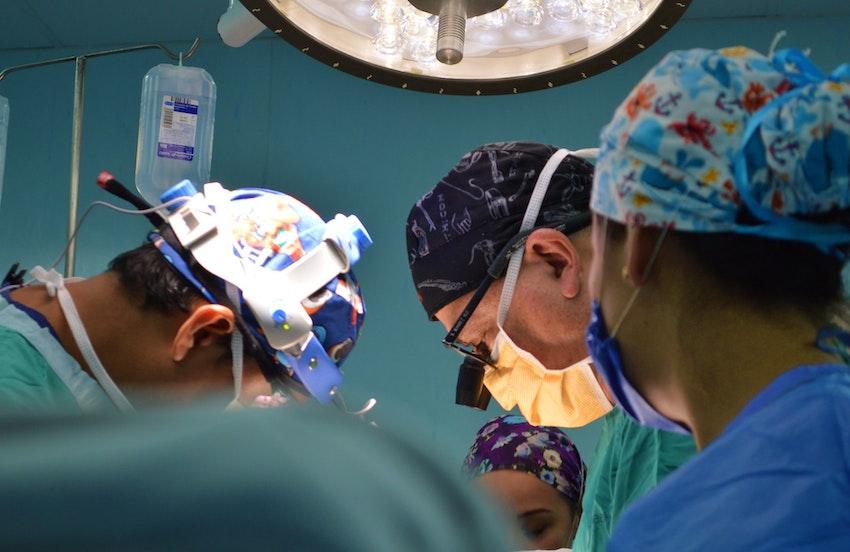3 Traditional Healthcare Career Paths in High Demand
Published: Apr 07, 2020

Healthcare is a constantly growing industry. This is due to a rising elderly population, a rise of chronic conditions such as diabetes and obesity (due to environmental and lifestyle anomalies), advancement in medicine and in medical technology, and the growth in the number of people seeking medical care due to availability of health insurance. These factors ensure a steady demand for healthcare professionals, both clinical and otherwise. Here, we take a look at three traditional healthcare careers in high demand.
1. Doctor
Doctors are trained medical practitioners who diagnose and treat people’s illnesses. Some of the prominent specialists are general practitioners (primary care physicians, trained to treat patients of any age or sex), pediatricians (childhood medicine), neurologists (functions and malfunctions of nerves and the nervous system), or cardiologists ( treatment of circulatory system).
In general, doctors have four years of medical school training, followed by a year of internship and a three- or four-year residency. Specialties are usually chosen in med school itself and can be mastered post residencies.
One specialty is that of a surgeon. Surgeons are healthcare professionals who use surgical methods to treat diseases and deformities. Their job includes diagnosing patients, planning a surgical plan after analyzing tests and X-rays, performing the surgical procedure with a team, and monitoring post-operative care. Training for surgery is extremely rigorous, time-consuming, and expensive. Apart from general requirements, a potential surgeon must qualify for a national or state exam like the U.S. Medical Licensing Exam to earn a practicing license. Most surgeons also become certified by a board such as the American Board of Surgery.
Contrary to popular belief, a day in the life of a surgeon does not solely consist of conducting surgeries. Surgeons are also responsible for making rounds, following up with patients, and staying current with new developments in the field. A challenging career no doubt, surgery is a great option for those who want to make a very tangible difference in people’s lives. An added benefit is the salary—today, the median salary is $270,561, making it one of the highest paying careers in the U.S.
2. Nurse
Nurses are trained with expertise in patient care. The different kinds of nurses employed in hospitals or clinics can be licensed practical nurses, nurse practitioners, ICU/NICU nurses, even registered nurse assistants. Nurses can also care for patients in their homes, or train aspiring students as Nurse Educators.
The nursing school curriculum involves both classroom teaching and hands-on clinical training. Such training includes a Bachelor of Science in Nursing (BSN) or Master of Science in Nursing (MSN) where students develop critical thinking and leadership skills. Further certifications from organizations like the American Nurses Credentialing Center may enhance professional credentials.
It’s hard to describe what an average day as a nurse might look like. One can expect to spend a significant chunk of the day making rounds, managing new patients, and administering medication. Nurses often work long shifts and are constantly interacting with people—from patients to family members. Thus, strong people skills and a genuine desire to care for others are essential.
The demand and job projection of a career in nursing is high, with an average salary of $71,703.
3. Dentist
Dentists treat teeth, gums, and other areas inside people’s mouths. Dentists monitor the oral health of patients by examining sores, managing swelling, extracting or replacing damaged teeth, and filling cavities.
Training in dentistry requires a bachelor’s degree with courses like biochemistry, organic chemistry, and/or physics. Volunteer or paid work in a dental college improves the chances of acceptance to dental school. After college, a four-year program at dental college is necessary, resulting in degrees like Doctor of Dental Surgery (DDS) or Doctor of Dental Medicine (DDM). This is followed by passing a state board examination to earn a medical license.
Dentists are employed by hospitals, government agencies, and dental-care programs; get into teaching, research, and administrative jobs; or have their own private practices. For those who have a private practice, a typical day not only includes meeting with patients and dental sales reps but also managing their own businesses—from managing administrative work to checking supplies.
On the other hand, dentists that work at larger dental clinics have to shuffle between many patients at a time, and effectively keep track of procedures underway. On average, a salaried dentist earns $175,840 a year, and dentist regularly ranks as one of the best and most rewarding jobs. In the latest U.S. News & World Report’s Best Jobs report, dentist ranked No. 2, trailing only software developer.
Jori Hamilton is an experienced freelance writer from the Northwestern U.S. She covers a wide range of subjects but takes a particular interest in covering topics related to business, marketing, management, finance, and technology. You can follow Jori on Twitter and LinkedIn.
